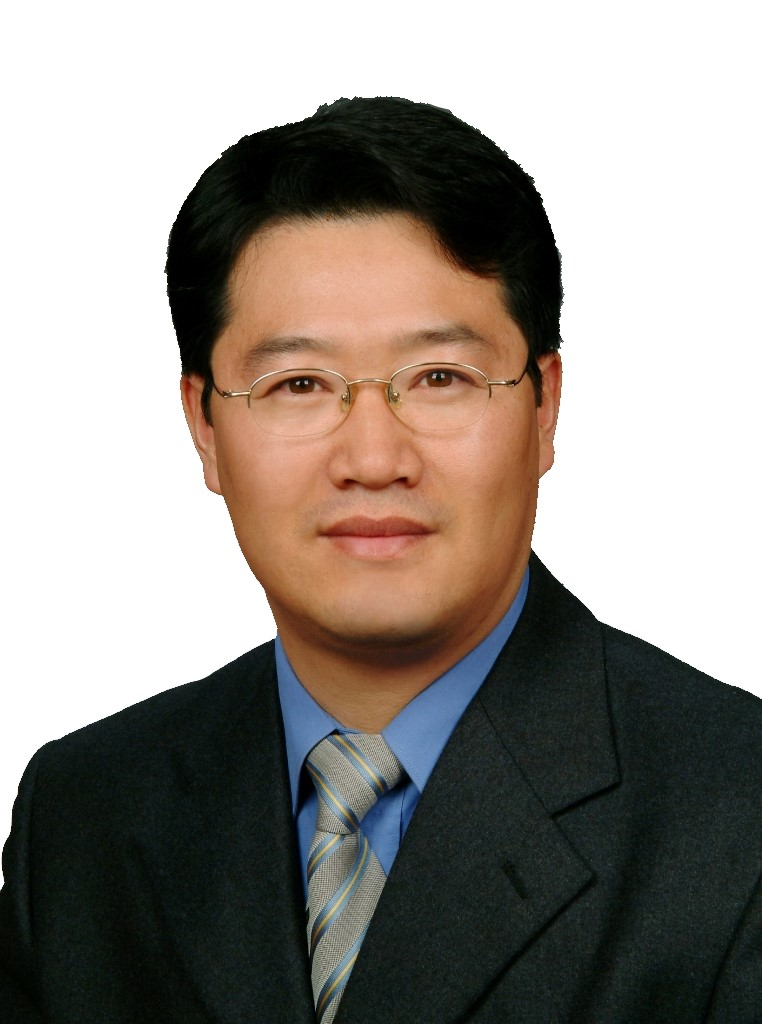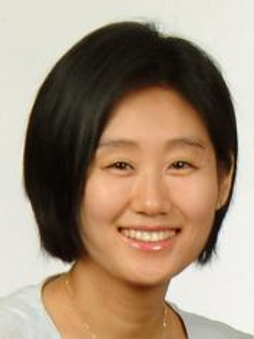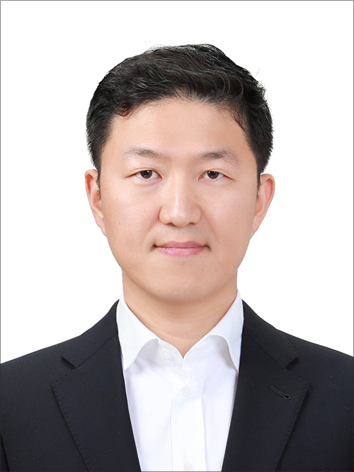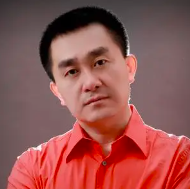Organizers: International Society of Bionic Engineering
College of Biological and Agricultural Engineering, Jilin University
College of Bionic Science and Engineering, Jilin University
School of Mechanical and Aerospace Engineering, Jilin University
Institute of Bionic Science and Engineering, Jilin University
Date: August 23, 2023 (Wednesday)
Venue: Room 209 of Bionics Building, Jilin University (Nanling Campus)
Chair: Prof. Zhihui Zhang (Jilin University)
SCHEDULE
Time | Contents/Presentations |
| 9:00-9:10 | Welcome Speech by Prof. Baoquan Yang |
9:10-9:45 | “Introduction to 3D Printing Lab Research Field” |
9:45-10:20 | “Biomimetics and future technology for sustainability” |
10:20-10:55 | “Biomimetic Sensors” |
10:55-11:30 | “Empowering medical implants with spermidine” |
 INVITED SPEEKER
INVITED SPEEKER
Changwoo Lee
Director/Principal Researcher of Advanced Manufacturing Systems Research Division, Korea Institute Machinery and Materials (KIMM)
Prof. Lee received his Ph.D. from Korea Advanced Institute of Science and Technology in 1997 majored in mechanical engineering. He began his career as an engineer in Samsung Electronics, followed by the research works at Future Education and Insstek in 2001-2004. Since 2005, He has been appointed as the Principal Researcher at Korea Institute of Machinery & Material (KIMM). Prof. Lee was awarded Minister Prizes respectively by Ministry of Education, Science and Technology in 2011 and Ministry of Trade, Industry and Energy of Korea in 2018. His research interests mainly focused on 3D Printing (3D Metal Printing) of Semiconductor Equipment. He has published and lectured widely on these topics, and the products were developed by a number of patent certification. His research achievement was selected as the “Top 10 Mechanical Technologies of the Year 2018”.
l Topic: Introduction to 3D Printing Lab Research Field
l Abstract:
In order to discover the theme of international joint research in the field of 3D printing with Jilin University, I introduce the research fields of the 3D Printing Lab of the Advanced Manufacturing Equipment Research Department of the Korea Institute of Machinery and Materials. The 3D printing lab has three main research fields.
1. Development of Magnetic Powder 3D Printing Technology: Magnetic Powder 3D Printing Technology is a technology that 3D printing complex structures that can maximize efficiency to improve the efficiency of the motor. It is also in the early stages of technology development worldwide. In order to print magnetic powder by PBF method, the development of the powder itself is also a big issue.
2. Printers dedicated to large cylinders: The biggest reason for commercialization of 3D printing technology is low price competitiveness. To solve this problem, it is required to develop a dedicated machine that optimizes powder usage and printing process.
3. Large 3D Printers: We are developing high-capacity printing technology for 3D printing large structures such as ships and wooden types. A key technology for large 3D printing is the design of lightweight printing heads.
 INVITED SPEEKER
INVITED SPEEKER
Hyuneui Lim
Director in the Nano-Convergence Manufacturing Systems Research Division of Korea Institute Machinery and Materials (KIMM)
Professor in Department of Nanomechtronics of University of Science & Technology (UST)
Hyuneui Lim was a head in Department of Nature-Inspired Engineering of KIMM during 2011~2020. She is working as a representative of Korea in International Society of Bionic Engineering (ISBE) and chair of Bioengineering Division of the Korean Society of Mechanical Engineers (KSME). She got PhD from chemistry, Korea University, studied as a Post-Doc in chemical engineering, University of California, Berkeley and has worked on the nanotechnology based nature-inspired engineering in KIMM from 2003. Her research is focused on the functional surfaces (self-cleaning, antireflective, water harvesting, antibacterial, anti-icing, coolant structures and coating) and flexible electronics (tactile systems, wearable devices and soft robotics) via self-assembly and 3D nanoprinting. She has interested in eco-friendly approach and organizing chair of ISNIT (International Symposium of Nature-Inspired Technology). She has received many awards including the Korea Women's Engineering Grand Prize (2021), Award from chair of Science in National Assembly of Korea (2016), Prize from Prime Minister of KOREA Government (2014), Award from chair of National Research Council of Science and Technology (2012). She was selected as the Associate Member of the National Academy of Engineering of Korea in 2020.
l Topic: Biomimetics and future technology for sustainability
l Abstract:
Biomimetics, an emerging interdisciplinary field, draws inspiration from nature's design principles to develop sustainable and innovative technologies. This talk presents the potential of biomimetics in shaping the future of technology for sustainability. By mimicking nature's time-tested solutions, we must seek to address pressing global challenges, such as climate change, resource depletion, and environmental degradation. Therefore, it is discussed how nature-inspired technologies can contribute to achieving sustainable development goals (SDGs) by promoting eco-friendly practices and reducing the ecological footprint of human activities. Especially, natural surfaces such as the lotus leaf, pitcher plant, moth eye, butterfly wings, cicada wings, Namib desert beetle’s back, shark skin provide the design and strategy for various structures and coating techniques. The several approaches will be introduced to save the energy and water via nanopattern and nanoparticle based functional surfaces. By embracing biomimetic principles and coupling them with cutting-edge technologies, we can pave the way for a greener and more resilient society, ensuring the well-being of both present and future generations. Successful implementation requires multidisciplinary collaborations, increased funding, and policy support to accelerate the transition towards a sustainable and biomimetic-driven future.
 INVITED SPEEKER
INVITED SPEEKER
Youngdo Jung
Senior/Principal Researcher of the Nano-Convergence Manufacturing Systems Research Division, Korea Institute Machinery and Materials (KIMM)
Youngdo Jung received his bachelor degree in Electrical Engineering from Seoul National University in 2005 and PhD degree in Electrical and Computer Engineering from Georgia Institute of Technology in 2010. He has been appointed as the Senior/Principal Researcher of Korea Institute Machinery and Materials (KIMM) since 2010. His research fields focused on wearable sensor devices for human health monitoring, biomimetic sensors for human sensing restoration, flexible and robust electrical stimulators for alleviating spasticity and restoring mobility, and sensing element for battery-integrated omni-tex. He has published several high level papers in international journals such as Advanced Functional Materials, ACS Nano, ACS Applied Materials & Interfaces, Soft Robotics, etc. In recent years, Dr. Jung has contributed a lot to the above research fields and is currently in charge of ISO/TC 266 in Korea.
l Topic: Biomimetic Sensors
l Abstract:
Sensor is a device that converts physical quantity of interest into measurable quantity, and can be found more and more frequently in daily life as the use of smart electronics prevails. For example, there are more than 5 types of sensors embedded in a smart phone – microphone, image sensor, accelerometer, gyro sensor, altitude sensor, etc and there are increasing efforts to embed more sensors. Recently the development of sensor research titled with “biomimetic” gains lots of interest for its novel design and superior performance.
The definition of “biomimetic” is as follows: “biomimetic” combines the disciplines of biology and technology with the goal of solving technical problems through the “abstraction”, “transfer”, and “application” of knowledge gained from biological models (ISO/TC 266). So, biomimetic sensors are devices inspired from a biological sensor whose core mechanism or function is transferred to the development of sensor. This lecture will cover examples of novel biomimetic sensors such as acoustic sensor, flow sensor, and image sensor inspired from sensory organs of dolphin, human cochlear, fish, and insects. Especially, the development of skin-type tactile sensor in our group will be presented.
 INVITED SPEEKER
INVITED SPEEKER
Zhenning Liu
Tang Ao Qing Laureate Professor and Ph.D. advisor at Jilin University
Dean of Institute of Bionic Science and Engineering at Jilin University
Dr. Liu received his Ph.D. from Harvard Medical School. The findings of his Ph.D. work had been published on Nature and PNAS, which had attracted great attention worldwide. Dr. Liu’s group is mainly focused on the design and synthesis of bionic materials targeting a broad range of medical, environmental and energy applications. He has published more than 80 papers in peer reviewed journals and has been granted more than 20 patents. He has also led three national projects and two big enterprise-sponsored projects at the level of more than 1000 RMB. Currently he is the project manager of the China-Korea International Collaboration Project of National Key Research and Development Program of China.
l Topic: Empowering medical implants with spermidine
l Abstract:
Medical implants are becoming increasingly important in clinics. However, the implants often induce foreign body response (FBR) of hosts, which may cause implant failure. Spermidine, as suggested by its name, is originally isolated from semen. It has been inferred, though not fully proved, that spermidine can modulate immune response to protect sperms injected into females, which are regarded as “foreign bodies” by the female immune system, to complete fertilization. Inspired by the immunomodulatory function of semen-originated spermidine, we have prepared a crosslinker from spermidine and terephthalaldehyde to crosslink two types of hydrogels based on exogenous biopolymers, which can induce inflammatory responses when used without spermidine. Compared to hydrogels crosslinked with diethylenetriamine, an imposter with structure similar to spermidine, spermidine-functionalized hydrogels have demonstrated abilities to inhibit pro-inflammatory cytokine production, upregulate anti-inflammatory gene expression and promote wound healing. Furthermore, animal experiments have shown that spermidine-empowered hydrogels can improve tissue regeneration and wound healing by accelerating collagen deposition, tissue remodeling and neovascularization, which is accompanied by the down regulation of pro-inflammatory cytokines at the early stage of wound healing and faster transition from M1 macrophage-dominated phase to M2 macrophage-dominated phase. More importantly, the enhanced healing result by spermidine-empowered hydrogels better resembles native skin, suggesting that the modulation of implant-mediated inflammation by spermidine may direct more natural healing process. Such a nature-inspired concept may afford a simple but elegant approach to empower not only hydrogels but also other implantable biomaterials with a function to mitigate inflammation and FBR.
Copyright © 2024 International Society of Bionic Engineering All Rights Reserved
吉ICP备11002416号-1









